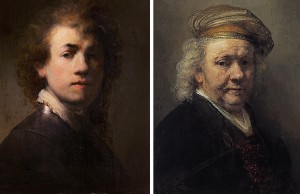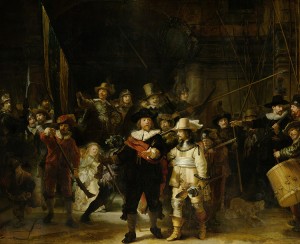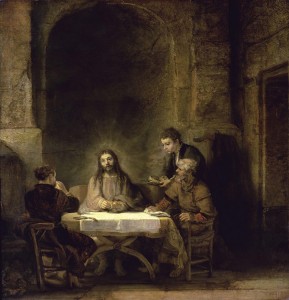Rijksmuseum: Rembrandt 350
Friday, June 7th, 2019June 7, 2019
In 2019, the 350th anniversary of the death of the Dutch artist Rembrandt is being celebrated as the “Year of Rembrandt” at the famous Rijksmuseum in Amsterdam, the capital and largest city of the Netherlands. Rembrandt is often considered the greatest Dutch artist in history. Rembrandt’s output of works of art was tremendous. Some scholars credit him with about 600 paintings, 300 etchings, and 1,400 drawings. Rembrandt was born on July 15, 1606. He died on Oct. 4, 1669.

Rembrandt’s self-portraits form a vivid record of his life. The portrait at left was completed in 1629. The portrait at right was finished in 1669, the year Rembrandt died. Credit: Self-Portrait with Gorget (1629), oil on oak panel by Rembrandt; Germanisches Nationalmuseum; Self-portrait (1669), oil on canvas by Rembrandt; Royal Picture Gallery Mauritshuis
The Rijksmuseum, which bills itself as the “museum of Rembrandt,” began the 350th anniversary of the artist’s death with “All the Rembrandts,” an exhibition of all the artist’s 22 paintings, 60 drawings, and more than 300 prints in the museum’s collection. The exhibition started February 15 and runs through June 10. Beginning in July, people will be able to watch (in person at the museum and online) the careful restoration of Rembrandt’s massive The Night Watch, his most famous work. Painted in 1642, The Night Watch has been the centerpiece of the Rijksmuseum’s collection since 1808.
On Oct. 11, 2019, the “Year of Rembrandt” will wrap up with “Rembrandt-Velázquez,” an exhibition (in association with the Prado Museum in Spain) that includes works by the Spanish artist Diego Velázquez (1599-1660). The two artists were Baroque contemporaries, and their works are often seen as complementary. (The Netherlands was part of the Kingdom of Spain from 1516 to 1648, and the Dutch struggle for independence took place during the lifetimes of Rembrandt and Velázquez.)

Rembrandt’s The Night Watch is one of 22 paintings included in the Rijksmuseum’s “Year of Rembrandt” celebration in 2019. Credit: Night Watch (1642), oil on canvas by Rembrandt; Rijksmuseum (Amsterdam)
Rembrandt was born in Leiden on July 15, 1606. His full name was Rembrandt Harmenszoon van Rijn. Rembrandt first studied art with an obscure Leiden painter from about 1621 to 1624. He then studied with the Dutch artist Pieter Lastman. About 1632, Rembrandt moved to Amsterdam, where he painted portraits of wealthy middle-class patrons. He remained there for the rest of his life, except for a few short trips within the Netherlands.

Christ at Emmaus (1648), also called Supper at Emmaus, is one of many works that Rembrandt created about the life of Jesus Christ. In this painting, Rembrandt portrays the resurrected Jesus revealing himself to two disciples seated at supper while a servant brings them food. The supper was held in the village of Emmaus, near Jerusalem, three days after Christ’s Crucifixion. Credit: © Peter Willi, SuperStock
The range of Rembrandt’s subjects is extraordinary. His works depict stories inspired by the Bible, history, and mythology. He also painted portraits, landscapes, nudes, and scenes of everyday life. Throughout his career, Rembrandt also made about 100 known self-portraits, in which he portrayed himself in various roles and contexts.
Rembrandt’s reputation rests on his power as a storyteller, his warm sympathy, and his ability to show the innermost feelings of the people he portrayed. His use of light and shadow and warm colors creates an atmosphere that enables us to share his profound understanding of the individual’s inner life. Few artists match his genius for showing the human aspect of Biblical characters, which he conveys through moving facial expressions and gestures.


